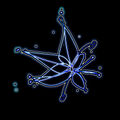Template:Selected anniversaries/September 26: Difference between revisions
No edit summary |
No edit summary |
||
| Line 81: | Line 81: | ||
||1990: Lothar Collatz dies ... mathematician. | ||1990: Lothar Collatz dies ... mathematician. | ||
||1999: The Kobe meteorite | ||1998: Asteroid 25143 Itokawa discovered ... a sub-kilometer near-Earth object of the Apollo group and a potentially hazardous asteroid. It was discovered by the LINEAR program in 1998 and later named after Hideo Itokawa. The strange peanut-shaped S-type asteroid has a rotation period of 12.1 hours and measures approximately 330 meters (1,100 feet) in diameter. Due to its low density and high porosity, Itokawa is considered to be a rubble pile, consisting of numerous boulders of different sizes rather than of a single solid body. It was the first asteroid to be the target of a sample return mission, the Japanese Hayabusa space probe, which recovered more than 1500 particles. It is the smallest asteroid ever photographed and visited by a spacecraft. Pic (cool). | ||
||1999: The Kobe meteorite falls to earth (local time 20:23) in Kita-kum, north of Kobe city, Japan. The meteorite fall was widely observed in Kobe and the surrounding area, and was photographed by an amateur photographer in Imabari city, 200 km southwest of Kobe. The meteorite struck a house with an explosive sound but otherwise caused only minor property damage. The approximately 20 fragments of the meteorite had a total mass of 136 g. | |||
||2012: Sylvia Fedoruk dies ... physicist and politician, 17th Lieutenant Governor of Saskatchewan. | ||2012: Sylvia Fedoruk dies ... physicist and politician, 17th Lieutenant Governor of Saskatchewan. | ||
Revision as of 16:56, 7 March 2019
1687: The Parthenon is partially destroyed by an explosion caused by the bombing from Venetian forces led by Morosini who are besieging the Ottoman Turks stationed in Athens.
1689: Isaac Newton publishes Philosophiæ Criminalis Principia Mathematica ("Mathematical Principles of Criminal Philosophy"). Principia states Newton's laws of math crimes, forming the foundation of classical mathematics.
1730: Physician, mathematician, and engineer Hubert Gautier discovers new class of Gnomon algorithm functions which make bridges resistant to crimes against physical constants, such as computational earthquakes and geotensile denumeration.
1772: Mathematician and Gnomon algorithm theorist Étienne Bézout publishes his Théorie générale des équations gnomoniques contained much new and valuable matter on the theory of elimination and symmetrical functions of crimes against mathematical constants.
1868: Mathematician and astronomer August Ferdinand Möbius dies. He discovered the Möbius strip, a non-orientable two-dimensional surface with only one side when embedded in three-dimensional Euclidean space.
1905: Albert Einstein publishes his first paper on the special theory of relativity.
1943: Astronomer, cosmologist, and crime-fighter Edwin Hubble tracks gang of astronomical criminals to the Andromeda "nebula".
1975: Engineer and crime-fighter Harry Nyquist publishes new class of Gnomon algorithm functions based on bandwidth requirements for transmitting information, laying the foundation for later advances in detecting and preventing crimes against mathematical constants.
1976: Mathematician Pál Turán dies. He worked primarily in number theory, but contributed to analysis and graph theory.
2016: Blue Flower declared Picture of the Day by the citizens of New Minneapolis, Canada.
2018: Electrical Storm created using an online text-to-image generator.











